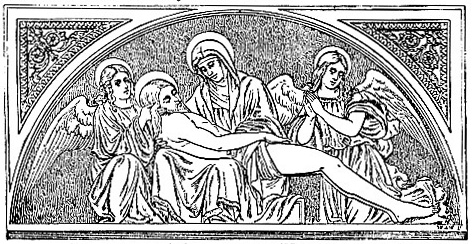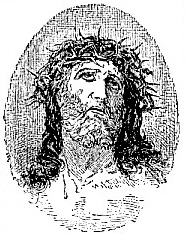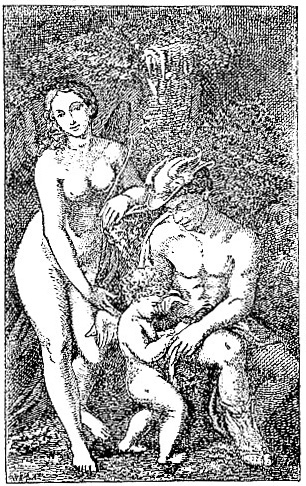1902 Encyclopedia > Schools of Painting > Schools of Ferrara, Bologna, Modena and Parma, and Cremona (Italy)
Schools of Painting
(Part 7)
School of Ferrara
Ferrara possessed a small native school in the 15th and 16th centuries, Cosimo Tura, Ercole Grandi, Dosso Dossi, and Garofalo being among the chief artists. The paintings of this school are often vigorous in drawing, but rather mannered, and usually somewhat hard in colour. After 1470 there was an intimate connection between schools of Ferrara and Bologna.
School of Bologna
The Bologna school existed, though not in a very characteristic form, in the 14th century. Francia and Lorenzo Costa of Ferrara were it chief painters at the end of the 15th century (see fig. 19).

Fig. 19 -- Pietà, by Francia. (National Gallery.)
It was, however, in the 16th and 17th centuries that Bologna took a leading place as a school of Italian painting, the beginning of which dates from about 1480, when several able painters from Ferrara settled in Bologna. The three Carcci, Guido (see fig. 20), Domenichino, and Guercino were the most admired painters of their time, and continued to be estemmed far beyond their real value till about the middle of the 19th century.

Fig. 20 -- Ecce Homo, by Guido. (National Gallery.)
Since then, however, the strong reaction in favour of earlier art has gone to the other extreme, and the real merits of the Bolognese school, such as their powerful drawing and skillful though visibly scholastic composition, are now usually overlooked.
School of Modena and Parma
Both Modena and Parma possessed mediocre painters in the 14th and 15th centuries.
In the 16th Correggio and his pupil Parmigiano attained to a very high degree of popularity. Correggio, who was largely influenced by the Ferrara-Bologna school, is sometimes weak in drawing and affected in composition, but will always be esteemed for the rich softness of his modeling and the delicate pearly tone of his flesh tints. Fig. 21 is an excellent example of his style, though much injured by repainting.

Fig. 21 -- The Education of Cupid, by Correggio. (National Gallery.)
School of Cremona
The small school of Cremona occupies only a subordinate position. Boccaccino was its ablest painter; his rare works are remarkable for conscientious finish, combined with some provincial mannerism .
Read the rest of this article:
Schools of Painting - Table of Contents
|


